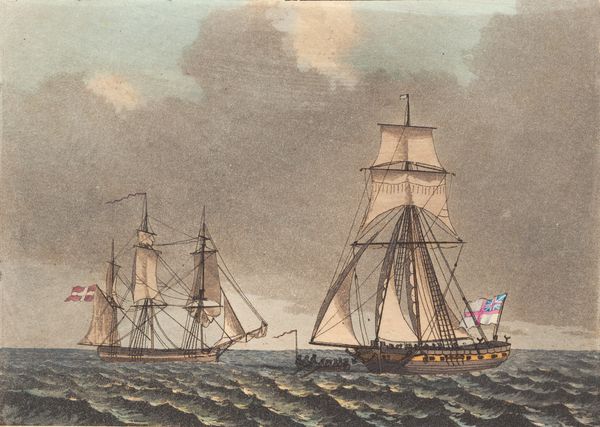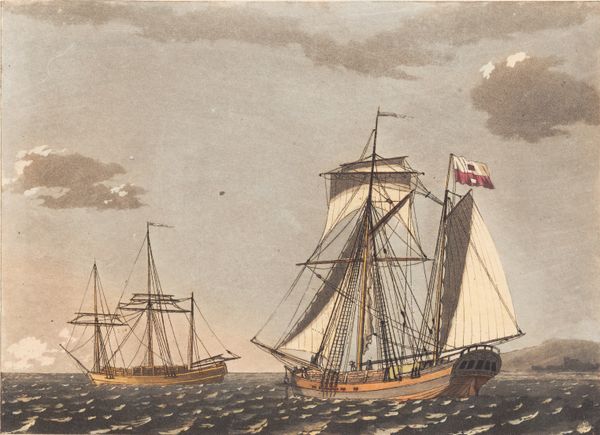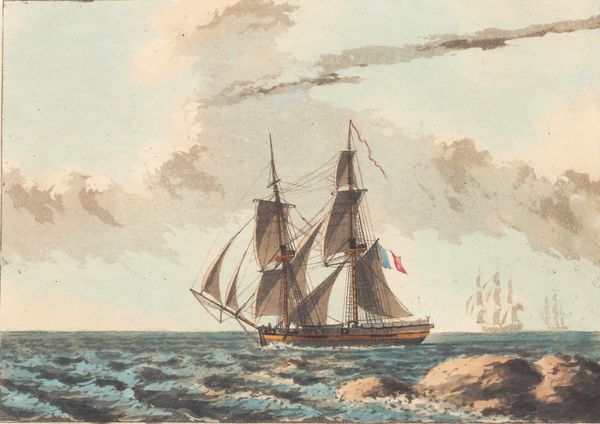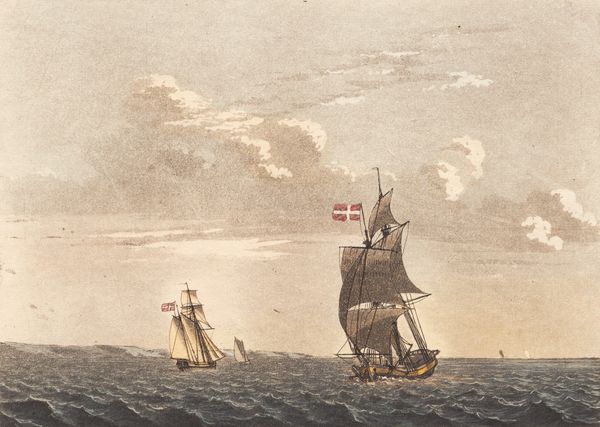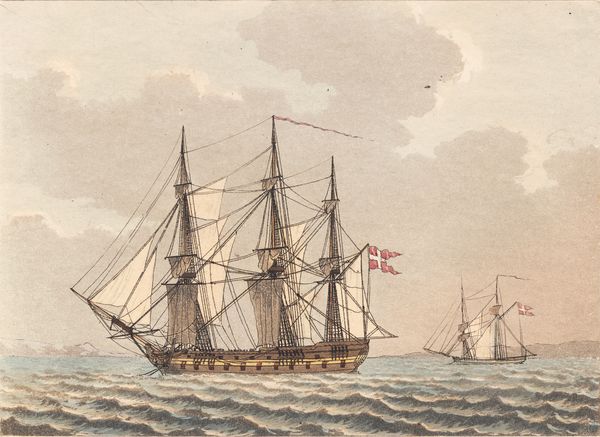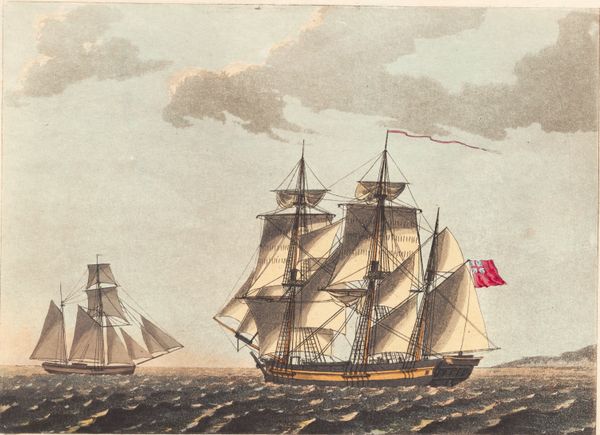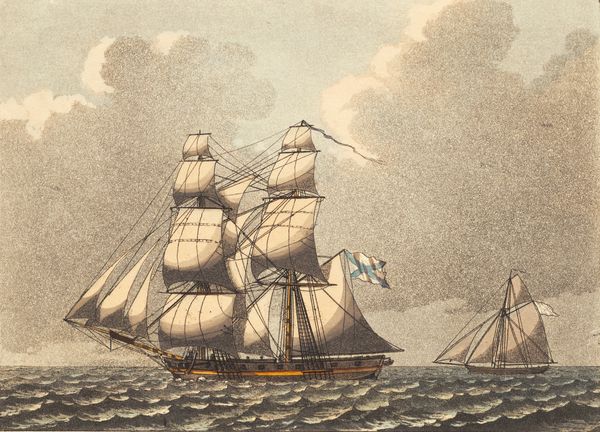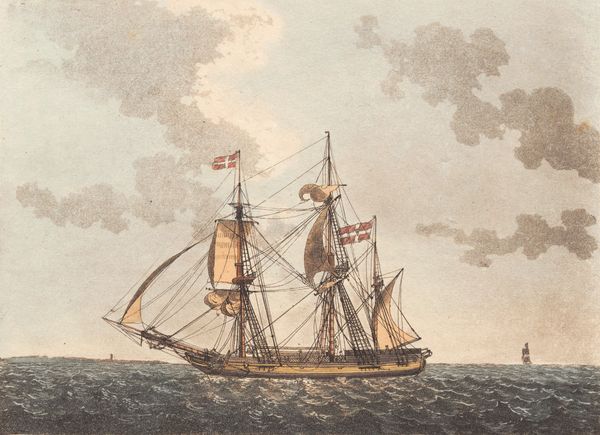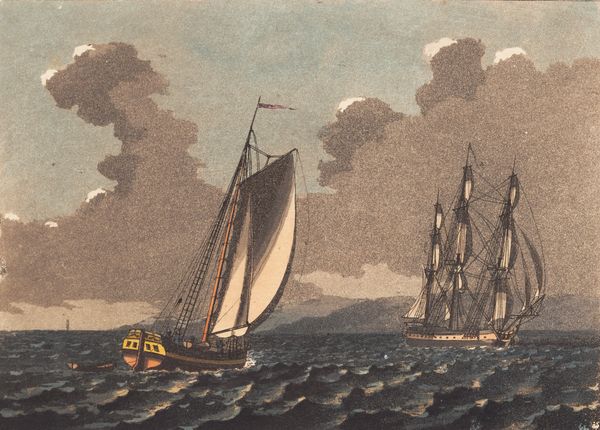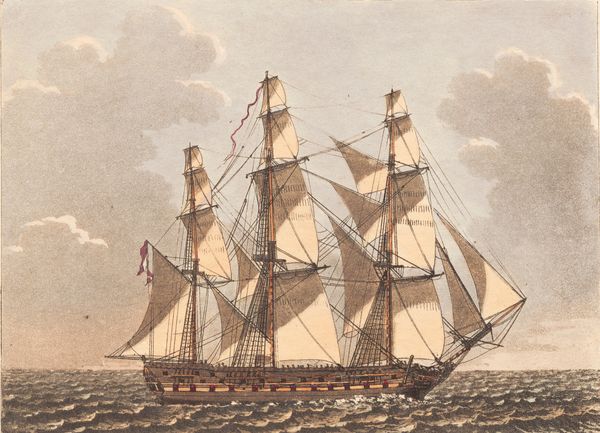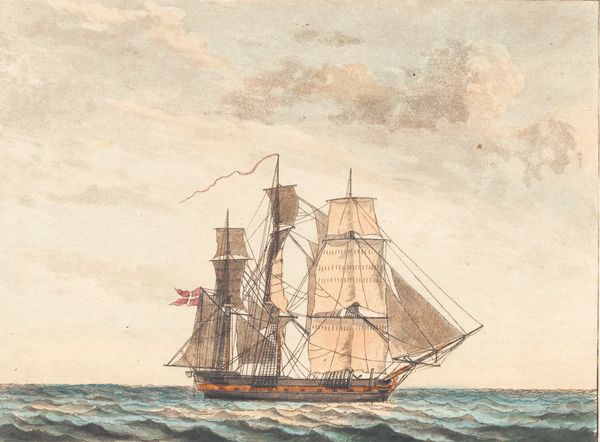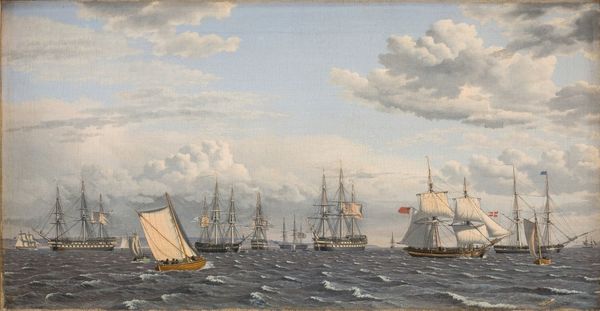
aquatint, print, watercolor
#
aquatint
# print
#
landscape
#
watercolor
#
coloured pencil
#
romanticism
#
orientalism
#
watercolour illustration
#
watercolor
Dimensions: 190 mm (height) x 239 mm (width) (bladmaal), 158 mm (height) x 214 mm (width) (plademaal), 141 mm (height) x 195 mm (width) (billedmaal)
Editor: This is "En russisk fregat til ankers," or "A Russian Frigate at Anchor," created around 1805 by Niels Truslew. It combines watercolor, aquatint, and coloured pencil on, it seems, paper. The hazy greys give it an almost ominous feel. What do you see when you look at this piece? Curator: What I find particularly compelling is how the aquatint process replicates the atmospheric perspective. Notice how Truslew uses watercolor washes over the aquatint to soften the hard edges of the etching. It really speaks to a society that craved both mass reproducibility, and artistic uniqueness, hence, layering labor processes from etching and printing, to painting with watercolor, resulted in an increased commodification of artistic practice. How do the various labor-intensive processes involved shape our understanding of this print, do you think? Editor: It makes me consider how valued a unique, handmade piece would have been, but that it would take collective resources and work to replicate something that’s essentially unique. But that raises questions of who benefits from the labor of art versus just owning the final result. Curator: Exactly. The layering of craft with early industrial reproduction asks questions of authenticity in artistic process. This aquatint sits in a liminal space between high art and print culture and reminds us of an increasing division of artistic and menial labour. Now think about how consumption changes artistic processes? Editor: So, by owning a print like this, consumers dictate its need for existing but are also kind of removed from its actual fabrication, thus further complicating its artistic worth beyond merely its production? That’s fascinating. I hadn't really considered the social implications of how it was physically created before. Curator: It shifts our focus from artistic genius to an artistic collective, where each plays a vital but, often unrecognized, role. The artwork becomes an artefact of complex societal factors. Editor: That definitely makes me see this piece in a completely new way. Thanks.
Comments
No comments
Be the first to comment and join the conversation on the ultimate creative platform.
